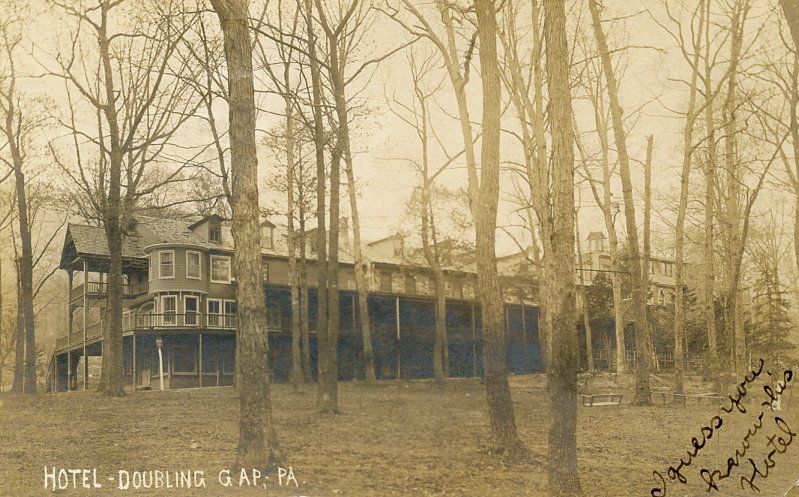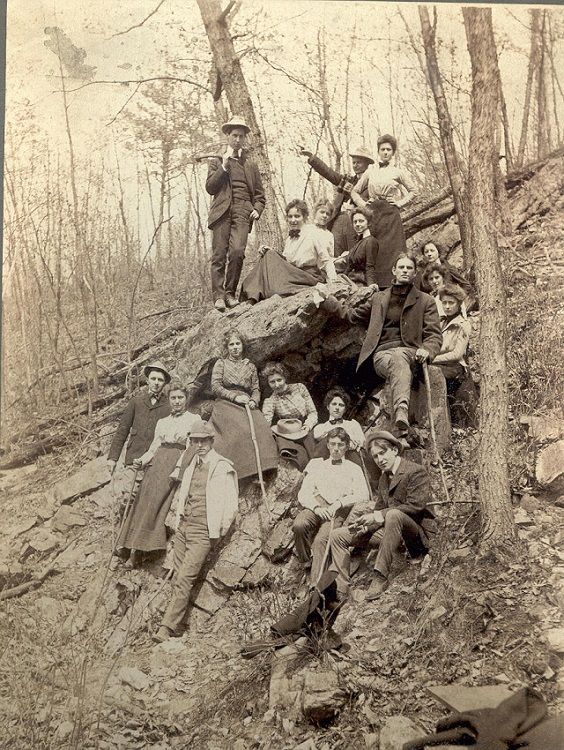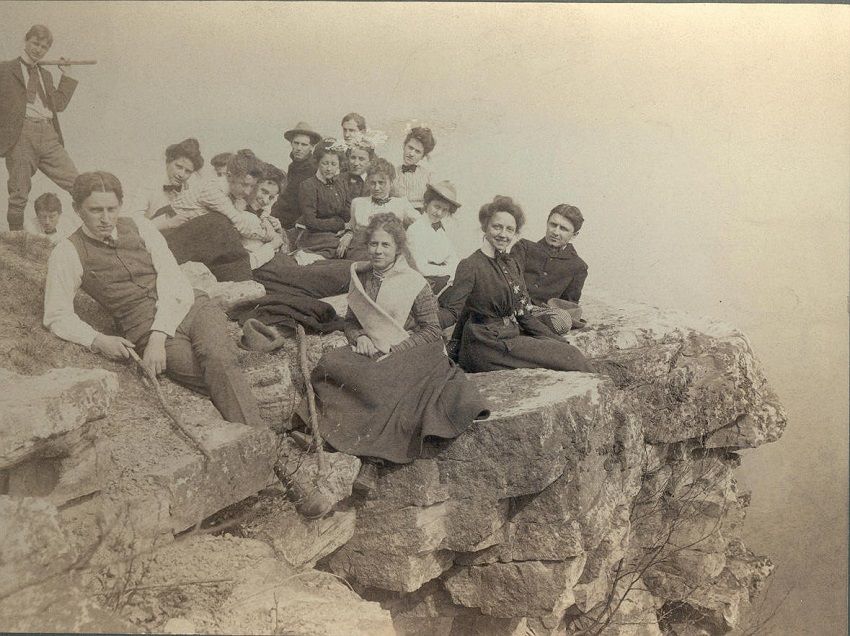Doubling Gap is the name given to the geographical formation in which Blue Mountain curves back on itself creating double gaps in the mountain range. In the earliest days of settlement in the county, the area was known as McFarland's Gap because of the original land ownership, but it was widely called Dublin (or Doubling) Gap by 1800.
Several mineral springs are located within the space between the ridges of the mountain. The water from these springs "contains sulphuretted hydrogen, carbonate of soda, carbonate of magnesia, sulphate of soda, sulphate of magnesia and chloride of sodium. There is also a chalybeate spring within a few rods of the sulphur spring, which in addition to its bicarbonate of iron, contains sulphate of magnesia, carbonte of magnesia, and chloride of sodium."1 These springs were allegedly known to the native residents of the region who had learned of the medicinal properties of the springs and passed that knowledge from generation to generation.2
Early European settlers would come to the springs and carry water away for consumption at home. On January 1, 1789, Sherman Barnes, a resident of Cumberland County, made application to purchase the "Sulphur Spring Tract" of about 150 acres along what is now state route 233 north of Newville. The sulphur spring was mentioned in the official county deed record as was "an improvement."3 Whatever the nature of that first-mentioned improvement, there was soon a boarding house on the property where visitors could stay while "taking the water." Johnathan Wallace was granted a hotel license in 1803, and the Doubling Gap Sulphur Springs Hotel came into business. Guests from Philadelphia and Baltimore frequented the hotel; they came for the curative powers of the water, but also enjoyed the quiet and the seclusion offered by the remote location.
During the years of 1816-1820, the cachet of the area was enhanced by the occasional presence of Lewis the Robber, a local outlaw who operated in southern Pennsylvania and took refuge in a cave in the side of the mountain along the trail which leads to Flat Rock. According to local lore, Lewis was generous to the people in the vicinity and was a good friend of the then hotelkeeper, Nicholas Howard. The hotel was visible from the cave area and Howard would raise a flag from an upper window in the hotel when there was no danger from officers of the law, and Lewis could feel free to move at will.[4 Now the forest area around the site of the hotel is part of the Tuscarora State Forest and Lewis's cave is part of Col. Denning State Park.
The Sulphur Springs Hotel had mixed success until the property passed into the ownership of Scott Coyle, a member of the Doubling Gap Springs Association, in September 1848. New owner Coyle built a three-story stone addition to the existing building, and following his management, the hotel flourished and became a full-fledged resort.5 In 1894, George A. Freyer of Philadelphia bought the hotel and assumed personal management, enlarging and improving the facilities and attracting guests such as John Wannamaker, DuPont, and General U. S. Grant. After the death of Freyer in 1912, there was a long struggle to continue the successful operation of the business, and in 1935, the hotel was closed when the property was purchased by Holbert Myers. Myers was more interested in the timber on the property than running a hotel. He owned the property for about a decade, eventually selling to the East Pennsylvania Conference Churches of God in November 1946. The Conference has operated the Doubling Gap Center in the years since. The center's programs began with youth camps in the summer and with the ensuing modifications and improvement, the Center now hosts year-round events including group retreats as well as camping.
Visitors to the gap in the 18th century came for the water and to enjoy the natural surroundings. Today this area also attracts those who enjoy the benefits of being in a beautiful and remote natural setting, but most bring their own drinking water.


